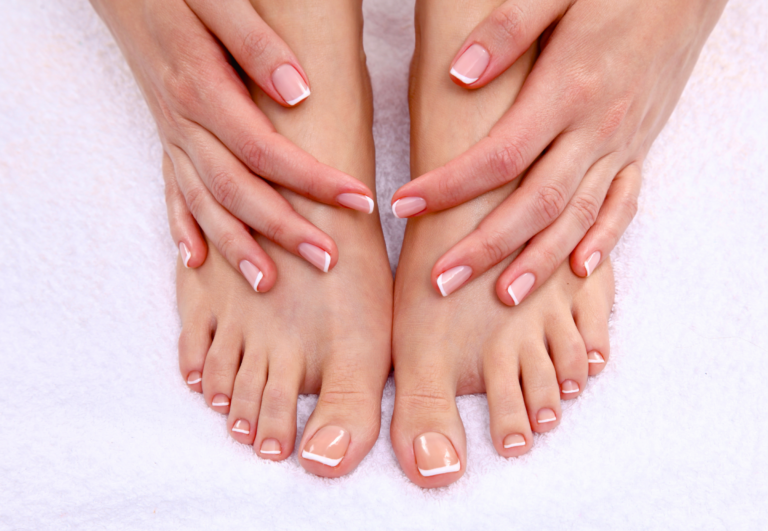Ways to Enhance Foot Strength: Essential Exercises for Stability and Mobility
In my time working with toe spacers and foot strength, I’ve seen firsthand the importance of maintaining healthy feet. Regardless of your age, strong feet not only support your body’s weight but also contribute to your overall health and mobility. With a multitude of muscles that often go neglected, enhancing foot strength can lead to improved balance, reduced pain, and better performance in physical activities.
My experience has taught me that simple exercises can make a significant difference in foot strength. Integrating foot-strengthening practices into your routine is key to building up the muscles that support your arches and toes. Whether you’re looking to improve flexibility, relieve discomfort, or just keep your feet in top condition, the right exercises can help you reach your goals.
I encourage focusing on exercises that mimic natural movements, such as toe curls or marble pickups, which can be done easily at home. Strengthening your feet should be approached gradually, allowing the muscles to adapt without strain. I’ve seen the positive outcomes of dedicating a few minutes daily to these kinds of exercises, resulting in stronger, more resilient feet over time.
Foot Anatomy and Function
Before we dive into enhancing foot strength, it’s important to understand the complex structure of the feet which includes bones, muscles, ligaments, and nerves that all work together to provide mobility and stability.
Key Foot Muscles and Their Roles
In our feet, the intrinsic muscles, those located within the foot itself, are vital for movements such as toe splay, which is the ability to spread the toes apart. This action is supported by muscles like the abductor hallucis for the big toe, and the abductor digiti minimi for the little toe. These muscles, along with others, help maintain the arch of the foot that contributes to balance and gait.
The calf muscles, specifically the gastrocnemius and soleus, play a role by controlling motion at the ankle and contributing to the force applied through the heels during walking. Proper strength and range of motion in these muscles are critical for foot function.
- Ankle: Enables foot to pivot, essential for balance.
- Arch: Distributes weight and absorbs shock.
- Big Toe: Provides propulsion in walking and running.
- Calf: Stabilizes the ankle and supports the foot.
- Heels: Bear a significant amount of body weight.
Importance of Foot Health and Strength
Maintaining foot strength and health is imperative not just for athletes but for everyone. Strong feet can improve your balance, reduce the risk of injury, and even alleviate some knee and hip issues. For example, weaknesses in the foot can affect the hip’s alignment and thereby influence knee posture.
Here’s how you can support foot health through exercise and awareness:
- Improve Range of Motion: Exercises that promote ankle flexibility can help prevent stiffness and maintain proper movement.
- Support the Heels and Arch: Choose footwear that provides adequate support, especially if you’re prone to conditions like plantar fasciitis.
- Strengthen Calf Muscles: Strengthening these muscles assists with stability and reduces the load on the feet.
By focusing on the intrinsic muscles and the connection they have with the overall musculoskeletal system, one can achieve a strong foundation that benefits your entire body’s movement and alignment.

Starting with Basic Foot Strengthening Exercises
To enhance foot strength effectively, starting with foundational exercises is crucial. They’re simple, doable at home, and require no special equipment.
Toe Curls and Marble Pickups
Toe Curls: To perform toe curls, sit with your feet flat on the floor and simply curl your toes inward as if you’re trying to grasp a piece of cloth beneath them. Hold for a few seconds, then release. Aim for three sets of ten curls for each foot.
Marble Pickups: Scatter a few marbles on the floor. Using just your toes, pick them up one by one and place them into a bowl. Start with five marbles and gradually increase the number to build strength and dexterity. This exercise is excellent for improving toe strength and agility.
Heel Raises and Toe Extensions
Heel Raises: Stand straight with your feet hip-width apart. Slowly raise your heels until you’re on your tiptoes, hold for a moment, and then lower back down. I suggest doing three sets of ten to fifteen repetitions.
Toe Extensions: While seated, place your feet flat and then lift all your toes off the floor, keeping your heel planted. Spread your toes apart as far as you can, then lower them back to the floor. Perform three sets of ten repetitions for each foot.
These basic exercises will get you started on the path to stronger, more flexible feet. Remember to perform them regularly for the best results.
Improving Balance and Stability
Improving balance and stability through targeted exercises can enhance coordination and posture, which are essential for daily movement and athletic performance. These techniques focus on strengthening muscles that support the ankles and feet and help prevent issues like valgus deformity, where the feet roll inward.
Single-Leg Balances
I find that standing on one leg is a simple yet effective exercise to boost stability and ankle strength. Here’s how you can practice it:
- Stand with feet hip-width apart.
- Shift your weight onto one foot.
- Lift the other foot off the ground, keeping your standing leg slightly bent.
- Hold this position for 20-30 seconds.
- Switch legs and repeat.
For an added challenge, try closing your eyes to further test your balance.
Barefoot Training Benefits
Training barefoot allows your feet to communicate better with the ground, improving balance and muscle coordination. I suggest these activities to reap barefoot benefits:
- Perform mobility exercises like ankle circles and toe spreads to enhance your feet’s range of motion.
- Walk on different surfaces such as grass, sand, or pebbles to stimulate and strengthen the intricate muscles in your feet.
Incorporating barefoot training into your regimen a few times a week can contribute significantly to your feet’s overall health and performance.
Advanced Techniques for Enhancing Foot Strength
In pursuit of peak foot performance for activities like running, hiking, or even walking, advanced exercises can dramatically improve foot strength and flexibility. These techniques are designed to challenge your feet, promoting both strength and mobility.
Short Foot Exercises
Short foot exercises specifically target the intrinsic muscles that support the arch of your foot. Here’s how to perform one effectively:
- Sit or stand with your feet flat on the ground.
- Attempt to draw the base of your toes towards your heel, shortening your foot without curling the toes or lifting the arch.
- Hold this position for a count of 10, then release.
Repeat this exercise 10 times on each foot. The goal is to increase the stability and strength of the foot’s inner muscles.
Sand Walking and Uneven Surface Training
Walking on sand offers a unique challenge due to its shifting, unstable surface which can significantly enhance foot strength and flexibility.
- Begin by walking barefoot on a sandy beach or sandbox, letting your feet adapt to the irregular surface.
- Focus on full foot contact with each step, from heel to toe.
Regular sand walking can improve your foot’s range of movement and adaptability, essential qualities for dynamic activities.
Remember: I’m knowledgeable about toe spacers and foot strength, but for personalized advice, consult with a professional in the medical field.
Preventive Care and Dealing with Common Foot Issues
As a toe spacer expert, I’ve seen how the right precautions and treatments can maintain foot strength and mitigate common issues. Let’s dive into the best practices for foot health.
Stretching and Warm-Up Routines
I always recommend starting any activity with a proper warm-up to prevent foot injuries. Achilles stretches are crucial because a tight Achilles tendon can lead to heel pain and plantar fasciitis. Here’s a simple routine:
- Calf Raises: Stand on the edge of a step and raise your heels, then lower them below the step level. Repeat 10-15 times.
- Toe-to-Wall Stretch: With your toe on a wall and heel on the ground, lean forward until you feel a stretch in your arch. Hold for 30 seconds; repeat 3 times.
Remember, warming up increases blood flow, reducing stress on foot structures.
Managing Conditions Affecting Foot Strength
Dealing with conditions like bunions, hammertoes, or arch pain requires consistency. Here’s what I do to manage these conditions:
- For bunions: Choose shoes with a wide toe box and consider using toe spacers to alleviate pressure.
- To reduce inflammation: Apply ice packs and engage in regular foot stretches to improve flexibility and reduce stress.
If you experience persistent foot pain, it might signify a more serious condition like plantar fasciitis. Incorporate exercises like toe curls and marble pickups that strengthen the plantar fascia and reduce heel pain. Remember, though, if pain continues, consult a healthcare professional.





